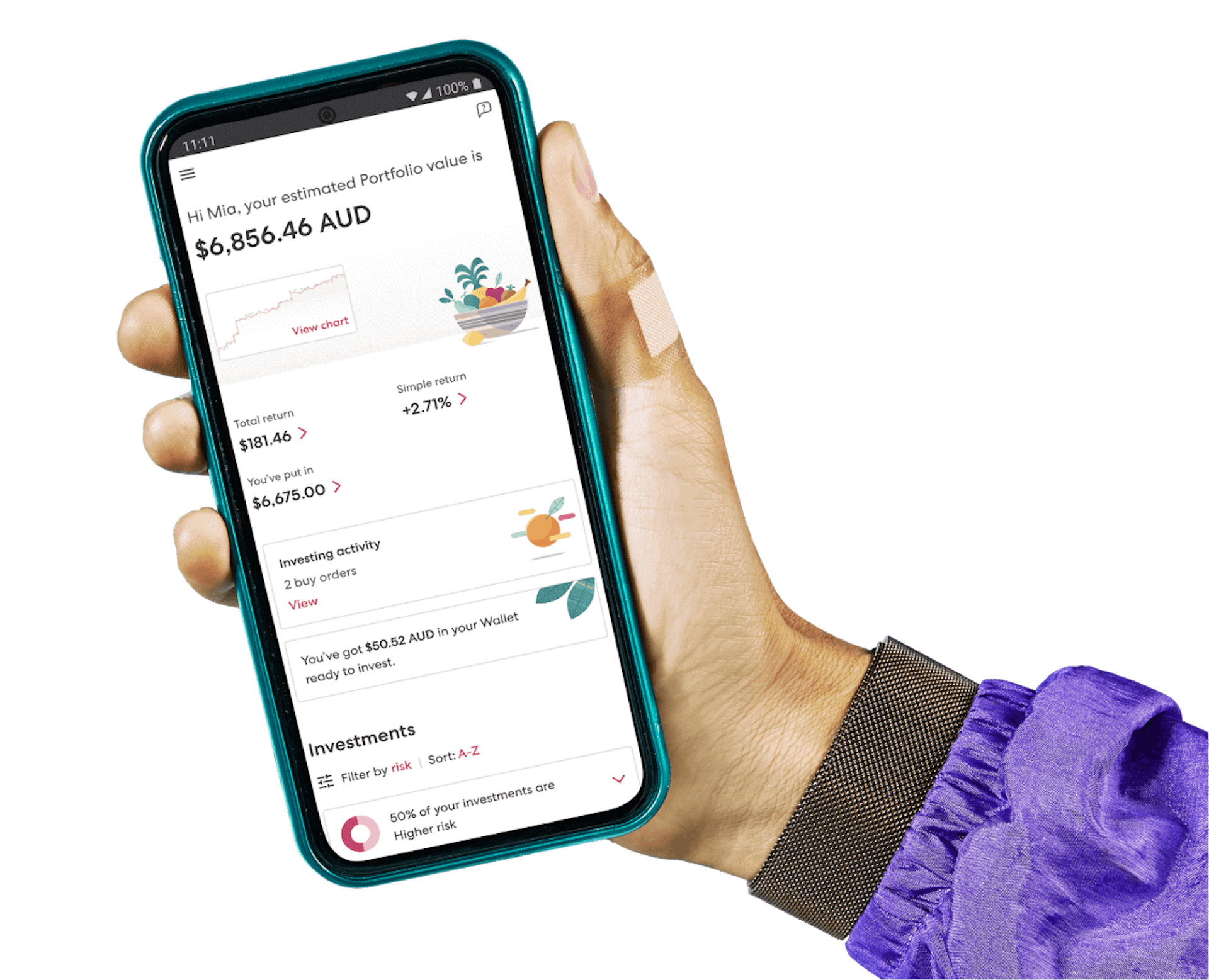Why invest for the long term?
Investing for the long term is a strategy where you expect an investment to grow over many years-even if it’s value goes up and down in the short term.

This is a common approach, so we thought we’d get into the details of why people do it, along with some things to keep an eye out for along the way. Let’s take a look
You don’t have to try to time the market
Investing for the long term is all about time in the market, not timing the market. When you invest in shares for the short term, it becomes more and more important to buy and sell at precisely the right time—the pressure is on to buy right before prices go up, and sell right before prices go down. But it’s impossible to know the exact optimal moments to do this, and making a mistake can be expensive.
By investing for the long term, you can avoid these little traps, because all you need is for the value of your investment to rise over a long period of time. The day-to-day and week-to-week movements aren’t such a big deal, because you’re in it for the long haul. If an investment is fundamentally good, there is usually an expectation that it will grow over the long term, even if the value tends to go up and down a bit in the short term.
On the other hand, if it’s fundamentally bad, the opposite might happen, and it could lose value over time no matter when you initially bought in. This is one of the tradeoffs of investing for the long term.
You can invest an amount you can afford
Investing for the long term means you don’t have to come up with a large amount at once. Coming up with a large lump sum to invest might be too daunting. After all, you still have rent to pay, groceries to buy, fuel to put in your car. Instead, you can invest a bit at a time, so your investments don’t impact your day-to-day life too much. You might invest a large amount in total, but in more affordable chunks each week or so (and if you’re someone who finds it tricky to remember to invest regularly, you can always try an auto-invest order to help put your investing on repeat). Over time, you might want to change the amount you regularly invest—you can always invest lump sums now and again too.By investing for a long period of time, you give yourself the time and financial space you need to build up to a large amount that will make a significant impact on your life. This is usually a lot easier than investing for the short term.
The tradeoff of this approach is that, over time, you may not really notice how much you’ve accumulated - and how much is now at risk. If you can invest $100 a week for several years without noticing, you may wake up to find yourself having invested $20,000 or more!
This is a good problem to have, but it’s important to stay on top of. The risks you may have been comfortable with when you were investing $100 a week may be different from the risks you are comfortable putting $20,000 of your money into. So as the years go by, make sure you’re constantly assessing how much you have, and how big of a risk you’re taking.
You need time for compound returns
Making compounding returns is something that can happen when you invest over the long term. It’s when you earn some returns, then start to earn returns from those returns.
The basic maths works out like this: if you invest $100 and earn 10% return in your first two years, then your first year’s return will be $10 (10% of $100), and your second year’s return will be $11 (10% of $110—your original investment plus your first year’s returns). This may not seem like much, but if this happens again and again over the years, it can really add up. After a while, your returns could be earning a fair bit of money just on their own, on top of the money you invested in the first place!
But it’s impossible to get this benefit without investing for the long term, because your returns need time to grow.
And don’t forget that returns aren’t guaranteed. To make compound returns, you have to make returns. If your investment stays flat or goes backwards, you won’t earn any compound returns.
You don’t have a crystal ball
Investing over the long term is based on the premise that your investment might increase in value over a long time horizon. If this happens (it’s not guaranteed), you don’t know the specifics of how it’s going to go up and down along the way, and you don’t know when these ups and downs are going to happen. And since you don’t have a crystal ball, you can’t know that!
But if your time horizon is long, you don’t actually have to know these specifics. You just need to make an educated guess about whether your investment will be worth more in the future than it is now. If you think it’s going to be worth considerably more, you don’t have to try to predict the movements along the way.
The downside compared to short-term investing is that you may have to make some tough judgement calls along the way. If your investment drops in value for months or years, you’ll have to figure out whether you think it’s going to stay that way, and your original idea was wrong, or if you’re just in a bump along the way. Short-term investors, by contrast, take their returns quickly - so while they have other tough decisions to make, this isn’t one of them.
Wrap up
There’s nothing wrong with short-term investing. For some people, it works really well. But if you’re not interested in trying to time the market and doing lots of buying and selling, you may want to try investing for the long term. If it pays off, it gives your future self a great shot at better financial security.
Ok, now for the legal bit
Investing involves risk. You aren’t guaranteed to make money, and you might lose the money you start with. We don’t provide personalised advice or recommendations. Any information we provide is general only and current at the time written. You should consider seeking independent legal, financial, taxation or other advice when considering whether an investment is appropriate for your objectives, financial situation or needs.
Join over 600,000 investors



